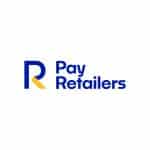Address Verification Service (AVS) is an eCommerce fraud prevention measure that verifies the person placing an order with a credit card can correctly identify the billing address on file with the card’s issuing bank.
AVS as a fraud prevention tool works on the assumption that a card’s authorized holder will be able to identify the card’s billing address, and that by extension, a shopper unable to identify a card’s billing address is less likely to be the authorized card holder.
By extension, identifying orders with AVS mismatches allows merchants to better identify potentially stolen credit credit cards, ultimately reducing the likelihood they will get hit with a chargeback.
Currently, all major credit cards in the United States use AVS including Visa, Mastercard, Discover, and American Express.
Address Verification Service Check: What Information is Verified?
Address Verification service is used during the checkout phase of Card Not Present (CNP) transactions.
When a customer makes a purchase, there are a number of fields they must provide information in to successfully authorize the transaction and complete checkout. With AVS activated, “Billing Address” is one of the requried fields.
Successfully filling out the AVS billing address fields requires the purchaser to provide standard mailing address information including:
- House or apartment number
- Street name
- City
- Zip Code
- State
Address Verification Service Credit Card Authentication Steps
The AVS system operates behind the scenes, and creates as little friction as possible for merchants. Merchants receive a decision in an instant.
Here are the steps:
- During the checkout process, a merchant requests the shopper provide the billing address associated with the credit card they want to use for payment
- The merchant passess this address along to the credit card company (Visa, Mastercard, etc.) when seeking authorization for a credit card transaction
- The credit card company forwards the data along to the bank that issued the card
- The bank checks the address provided by the shopper against the address on file in their records
- The bank responds to the credit card company with an AVS Response Code. This code indicates how well the provided address matches the one on file
- The credit card company passes this information along to the merchant
Address Verification Service Mismatch Meaning
When a merchant sees an AVS mismatch reported, it means the billing address of the card provided by a shopper during the checkout process does not match the billing address on file with the card’s issuing bank.
AVS Check Mismatches: Are they Fraud?
It’s important for merchants to understand that AVS mismatches are just an indicator of fraud; they do not, by definition, mean a transaction is fraudulent.
In fact, there are a number of legitimate reasons why the Address Verification Service process may return a mismatch for legitimate transactions.
Ultimately, the decision to approve or decline an order rests solely with the merchant or their fraud prevention tools provider. Neither the issuing bank nor the credit card company automatically cancels a transaction because of an AVS mismatch.
On this point, merchants are strongly cautioned against cancelling every order with an AVS mismatch. Yes, that strategy will prevent chargebacks. However, it will also decline a lot of legitimate orders.
These “False Positive Declines” represent lost revenue, and can be just as devastating to a business as chargebacks.
Address Verification Service Response Codes for Visa, MasterCard, Discover, and American Express
Although it might seem straightforward, AVS codes are not a “yes” or “no” proposition. In fact, AVS returns different codes depending on how complete a match is.
Here is a list of the AVS Response Codes and what they mean:
- AVS Code A: Address. Address match without taking the Zip Code into consideration.
- AVS Code B: International address. Address match without taking the Zip Code into consideration.
- AVS Code C: International address. No matched details.
- AVS Code D: International address. Matched address and Zip Code
- AVS Code E: Postal mail or phone transaction. No matched details.
- AVS Code F: UK address. Matched address and Zip Code.
- AVS Code G: International address in unsupported AVS country. No matched details.
- AVS Code I: International order, no address provided. No matched details.
- AVS Code M: Address. Matched address and Zip Code.
- AVS Code N: No. No matched details.
- AVS Code P: International address, only Zip Code provided. Matched Zip Code.
- AVS Code R: Retry.
- AVS Code S: AVS Service not supported.
- AVS Code U: AVS Service unavailable.
- AVS Code W: Complete Zip Code provided. Matched nine-digit Zip Code.
- AVS Code X: Exact match. Matched address with nine-digit Zip Code.
- AVS Code Y: Yes. Matched address with five digits of Zip Code.
- AVS Code Z: Zip Code. Matched five-digit Zip Code only.
- AVS Code Error: Service error.
Examples of How to Use Address Verification Service in Fraud Prevention
AVS is considered a standard feature for merchants to use to protect themselves when processing online transactions. It should be used as part of any eCommerce fraud prevention strategy.
One of the most common examples of how to use AVS is as a front-line indicator that more review of an order is needed before approval. Once detected, mismatched orders can be elevated in priority and given additional scrutiny.
Depending on the amount of resources you have to devote to fraud prevention, this process can take many forms. But usually, merchants will use come combination of more sophisticated fraud prevention tools including identify verification, physical biometrics, and complete fraud platforms to determine if an order is fraudulent.
To emphasize the point one more time, AVS is not a foolproof fraud prevention solution. It’s a tool, and should never be used as the sole basis to approve or decline an order.
AVS Fraud Prevention Strategy Against Chargebacks
Chargeback prevention is emotional, and AVS mismatches provide a basis for eliminating as many of them as possible. But this is precisely why merchants find it tempting to over-rely on it.
With all the different types of eCommerce fraud out there, it’s little wonder that chargeback prevention strategies must also be dynamic.
AVS is one fraud prevention tool amongst many. Don’t ignore it, but don’t use it as a justification for an overly cautions strategy, either.
Remain vigilant, keep up on the best practices for how to fight chargebacks, and take advantage of the latest technologies to keep eCommerce fraud as low as possible while still maximizing revenue from legitimate orders.





























